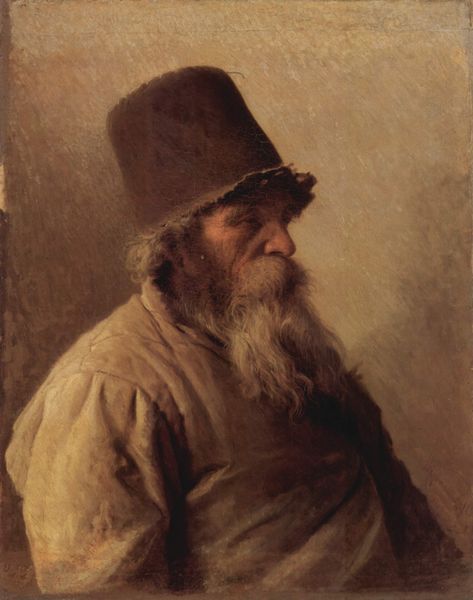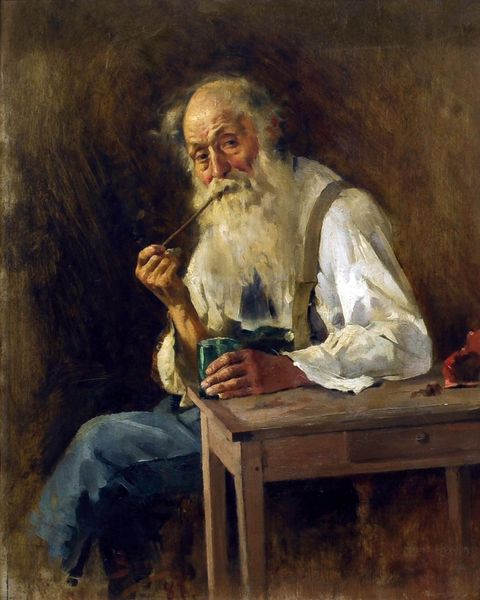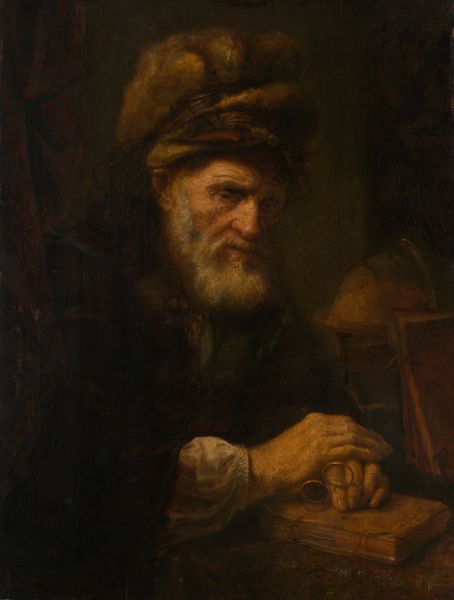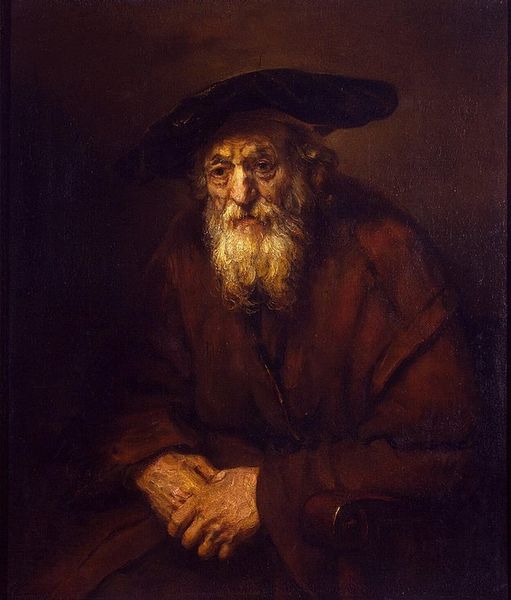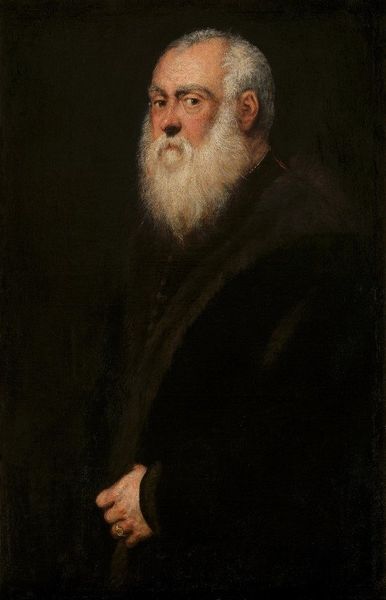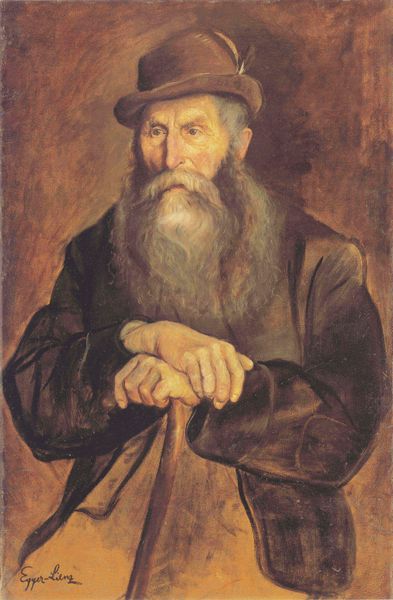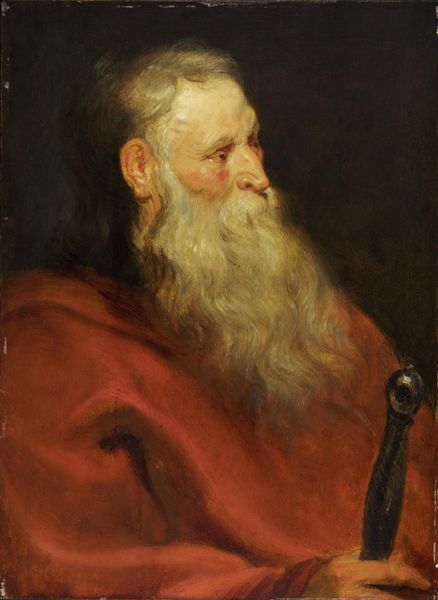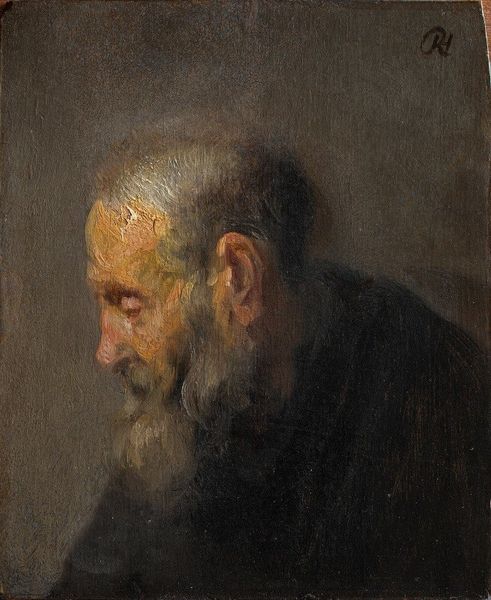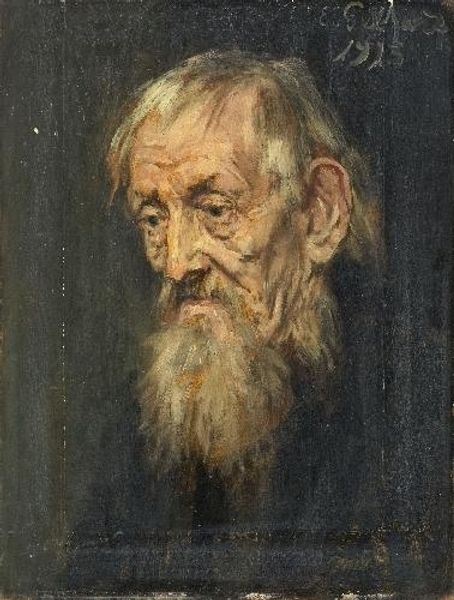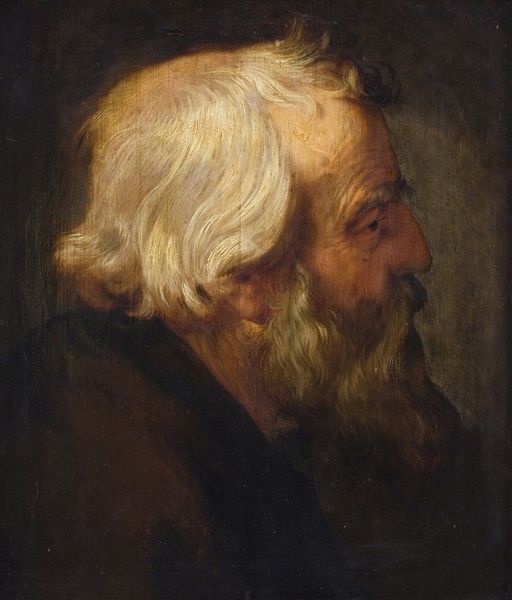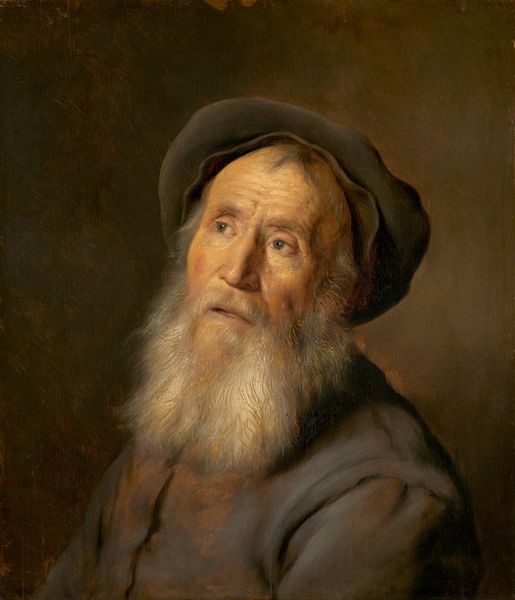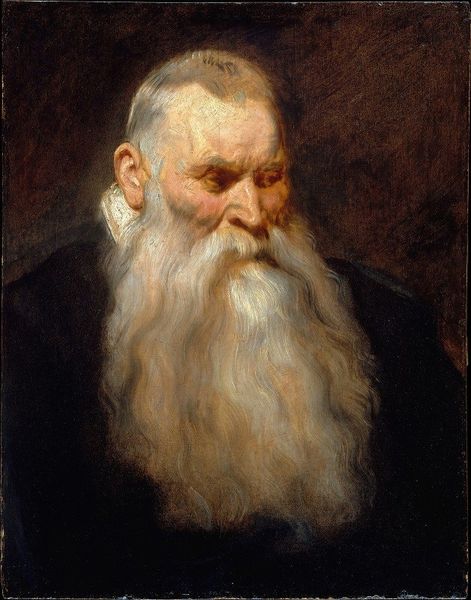
Copyright: Public Domain: Artvee
Ľudovít Čordák painted this study of a seated old man in oil, sometime between the late 19th and early 20th century. The portrait depicts an elderly man with a long white beard, leaning on a walking stick. Born in what is now Slovakia, Čordák’s artistic production took place against the backdrop of the Austro-Hungarian Empire. This empire was characterized by rigid social hierarchies and a complex mix of cultures. The painting invites us to reflect on the changing social role of the elderly in a rapidly modernizing society. The old man, possibly a peasant, embodies a traditional way of life that was being challenged by industrialization and urbanization. It also reflects the development of national schools of art, which saw a renewed interest in rural life. To fully understand this artwork, one could research the socio-economic conditions in Slovakia during the late 19th and early 20th centuries, as well as the development of artistic movements in the region. These inquiries shed light on the painting’s historical context and its potential social commentary.
Comments
No comments
Be the first to comment and join the conversation on the ultimate creative platform.
